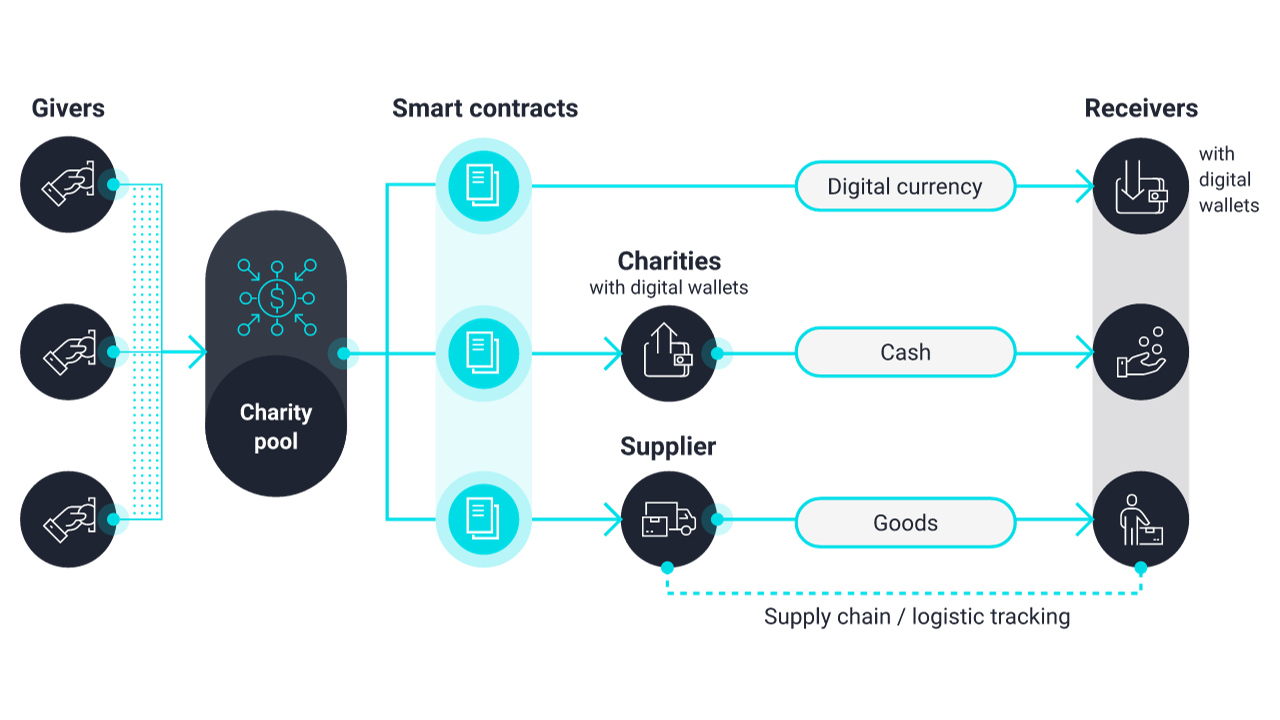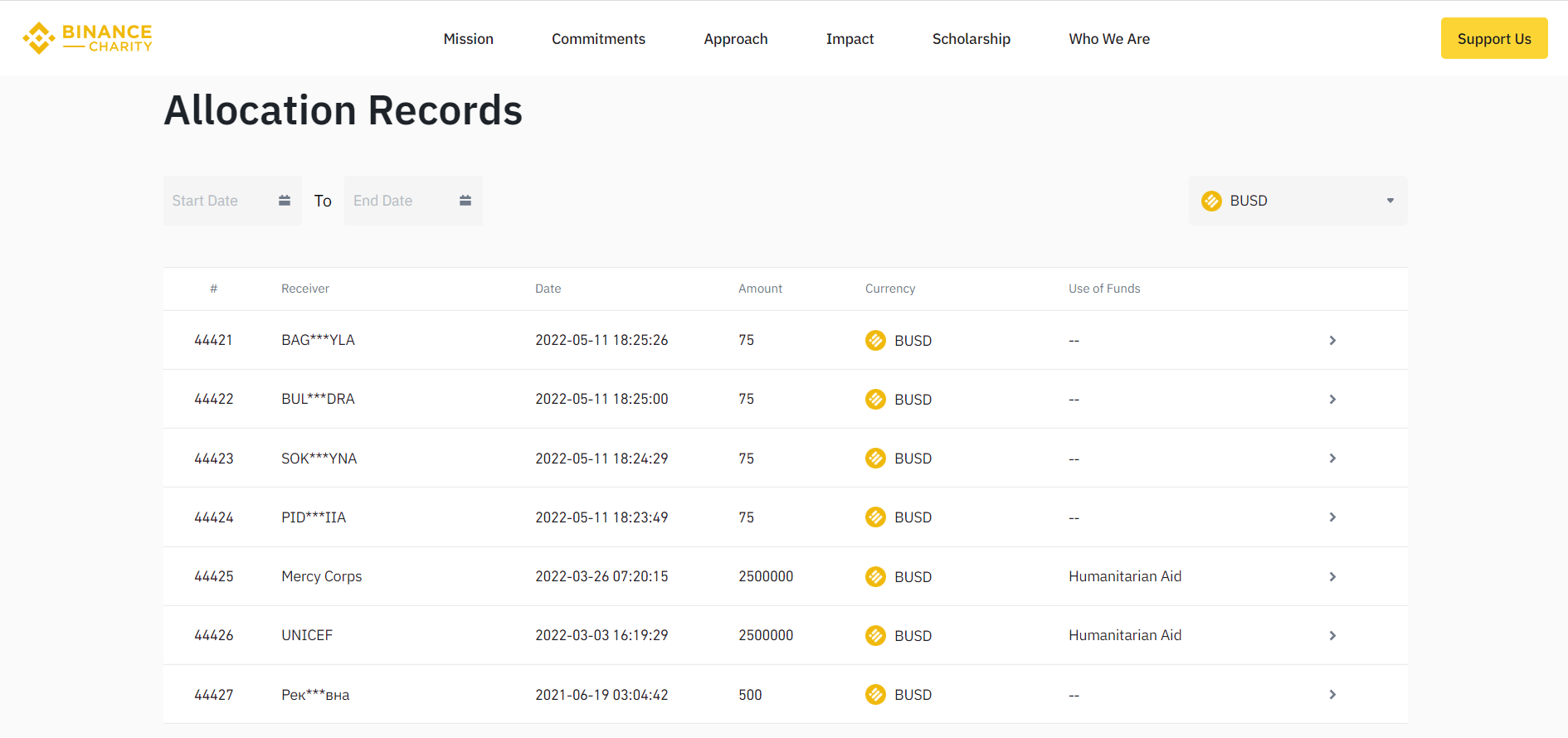In 2021, the Australian branch of the Red Cross received $90 million to aid the victims of the bushfires that plagued various regions of New South Wales and Victoria.
However, the organization soon came under fire for its lack of transparency when it revealed that it would only distribute around one-third of the intended funds on immediate assistance and that it could take up to three years to distribute the total amount.
One resident who lost his home to the fires told local media, “They made a lot of promises that they’re going to this, that and other, (but) I’ve received nothing, I have no idea where the money is going.”
This one example highlights a common problem among charities: The processes for distributing charitable giving are often obscured by bureaucracy and prone to mismanagement. Without robust accountability mechanisms, charities risk mismanaging or misusing funds and, at worst, committing outright fraud.
Jack Vinijtrongjit, CEO of AAG — a venture capital firm that heads the AAG Charity DAO — told Cointelegraph, “Statistically, a lot of money goes to waste when it comes to charity. For example, in some cases, only fifty cents out of a dollar ends up at the destination. Very few can achieve efficiency in the 83% range, like Oxfam.”
Blockchain technology can provide tangible benefits for both donors and charities. It offers greater accountability and transparency for contributors, enabling them to follow their donations and see the results of their generosity.
How blockchain can provide transparency
Blockchain technology provides real-time tracking of donations and transactions. This level of transparency helps to build trust and confidence among donors, as they can verify that their funds are being used for the intended purpose.
In addition, it allows charities to provide donors with a detailed breakdown of their contributions, showing how each dollar is allocated to various projects or initiatives. Vinijtrongjit said, “With blockchain, the fund flow can be seen easily, and if the organization expects people to keep donating, they need to make sure as many funds as possible are delivered as intended.”

How blockchain can help provide more transparency. Source: OpenLedger
He said this transparency can reduce fraud and misuse of funds, as “there can be cases where corrupt local officials would take the funds and misuse them.”
Blockchain technology also has the important property of being immutable. A blockchain record or transaction cannot be changed or removed without the agreement of all nodes in the network. Because of its immutability, the charity’s financial records, donation histories and other data are safe from alteration.
Recent: Central banks want to look under crypto’s hood — Is this a positive sign?
This function is especially important for nonprofit organizations since it guarantees that any donations made to their cause will be permanently documented and easily audited by third parties.
Smart contracts, self-executing contracts with the terms of the agreement directly written into code, are another valuable aspect of blockchain technology for charities. These contracts can be used to automate processes such as distributing funds or verifying the completion of specific tasks.
Smart contracts help ensure that funds are used for their designated purposes, as they only release funds when predefined conditions are met. This enhances transparency by eliminating the need for intermediaries and reducing the risk of misusing funds.
Charities using blockchain technology
One notable example of a charity using blockchain technology is the United Nations World Food Programme’s (WFP) Building Blocks project. WFP deployed blockchain when providing food assistance to Syrian refugees in Jordan.
Each transaction, from food purchases to distribution, was recorded on a blockchain, allowing refugees to access their entitlements via a biometrically verified account.
The World Food Programme also extended its use of blockchain to Yemen, where it employed the technology to provide food assistance to vulnerable populations amid the ongoing Yemeni civil war. By providing digital vouchers through blockchain, the WFP could ensure that aid reached those in need while minimizing the risk of diversion or fraud.
In 2022, Binance launched the Ukraine Emergency Relief Fund, a cryptocurrency-focused crowdfunding platform that allowed people to make contributions to emergency relief efforts aimed at assisting refugees and children in need. This initiative also aims to provide crucial logistical support — including food, fuel and essential supplies — for refugees on the ground. Additionally, Binance donated 16,042 BNB (BNB), equal to $6 million at the time, to the fund.
Donations can be tracked via the official fundraising page, which shows a list of donors, the amount donated by each donor, the total amount raised, and allocations. For example, 2.5 million Binance USD (BUSD) (worth $2.5 million) was allocated to UNICEF and Mercy Corps each, out of the $11.3 million raised so far.

Allocation records of dispersed funds. Source: Binance Charity
Smaller charities such as GiveDirectly have also adopted blockchain technology. GiveDirectly, which recently provided direct cash transfers to survivors of the earthquake in Morocco and children living in poverty in Flint, Michigan, uses blockchain to record and verify every transaction.
Key considerations for charities
For charities looking to incorporate blockchain technology, there are several best practices to follow. First, it is imperative to establish clear objectives when integrating blockchain into charitable operations.
These objectives should be well-defined, including enhancing transparency, streamlining administrative processes or optimizing aid distribution.
Selecting the most suitable blockchain platform is of paramount importance. Choices like Ethereum or Hyperledger should be made judiciously, considering factors such as scalability, security and the unique requirements of the charitable organization.
Marina Zibareva, a spokesperson for Binance Charity — a nonprofit organization that uses blockchain technology for crypto donations — told Cointelegraph, “Charities need to adhere to some critical best practices when adopting blockchain technology to improve transparency in charitable operations. Among these is gaining a comprehensive understanding of how blockchain and cryptocurrency function. Acquiring this foundational knowledge is a pivotal first step in the integration process.”
Understanding how blockchain technology works is important for charities since blockchain technology isn’t a one-size-fits-all solution. There are different implementations and platforms, each with unique features. For instance, layer-2 networks like Polygon have faster speeds and lower transaction costs. To select the most suitable solution, charities must understand these differences and how they align with their specific goals and donor preferences.
Jerry Lopez, founder and CEO of Philcoin — a blockchain-based philanthropy platform — told Cointelegraph:
“It is important for the organization to conduct an internal analysis to assess capabilities and resources. Is the organization ready for innovation and/or adaptation? Are the main stakeholders ready for the shift?”
“This sounds like an obvious point, but it’s essential. Charitable organizations can be slower to accept change. Understanding what’s necessary to make the leap to blockchain solutions will require additional resources and investments to ensure credible, trusted and functioning solutions are implemented,” he said.
Lopez also stressed the importance of the organization knowing if it’s “fully committed to seeing through the transition,” which can take time, research, understanding and a dedicated team to help manage and oversee the development. “Very often, organizations will learn through trial and error,” Lopez said.
Good security practices and maintaining data accuracy are fundamental principles to building and maintaining trust with both donors and beneficiaries. This involves the continuous upkeep of precise, up-to-date records on the blockchain. Regular audits and verification of transactions are essential measures to prevent errors or fraudulent activities.
Zibareva said, “Charities must prioritize security as they venture into the blockchain realm. Adopting cutting-edge security measures and technologies is vital to safeguard the system’s integrity. Putting safety at the forefront ensures the protection of the organization and its donors from potential fraud and bolsters the overall trust in the transparency mechanisms in place.”
Adhering to data protection regulations and preserving the privacy of sensitive beneficiary information are nonnegotiable elements. These data security considerations should be balanced with the necessity of allowing accessibility for verification purposes.
Planning for scalability is another critical aspect, particularly when anticipating a growing volume of transactions and beneficiaries over time. The long-term sustainability of the blockchain infrastructure should be a central concern, ensuring that it can adapt to the evolving needs of the charitable organization.
Zibareva added that charities “should evaluate their technical readiness, considering their capacity to manage cryptocurrency wallets and other blockchain-related infrastructures.”
“By comparing their operational needs with blockchain’s capabilities and leveraging expert insights, charitable organizations can decide whether blockchain integration aligns with their transparency goals.”
It’s also necessary for charities to assess whether their community (donors, partners, etc.) are ready to accept using blockchain platforms for charitable purposes.
Lopez said, “Is the community ready to accept blockchain? How will blockchain solutions impact the supplier chain, for example? Is the community able to accept, receive or interact with the new solutions, or will this require additional infrastructure, education, training and development to ensure the full charitable cycle is onboarded?”
The adoption of blockchain technology in the charitable sector is a complex process that goes beyond just the technology itself. It involves organizational preparedness, supplier relationships and the broader community’s ability to adapt. Transparency in charities is a noble goal, but it requires a comprehensive and well-planned approach to ensure that the full potential of blockchain is realized without leaving any stakeholders behind.
What else can charities do to increase transparency?
While blockchain technology can indeed help track the flow of funds, it can be combined with additional organizational processes to ensure that charitable donations are used effectively.
Vinijtrongjit said, “I don’t believe blockchain alone can help fix these issues since tracking the use of funds is much more complex. For example, local charities at the destination may be forced to use a vendor overcharging them as part of the corruption scheme. An independent audit must still be carried out, but at least blockchain can be used to ensure the fund gets to the destination.”
Magazine: Ethereum restaking: Blockchain innovation or dangerous house of cards?
Independent audits are another important aspect of ensuring transparency, as they can thoroughly examine a charity’s financial records, operations and compliance with regulations. They provide an objective evaluation of the organization’s financial health and adherence to best practices.
Vinijtrongjit also believes that organizations must fully adopt blockchain in every part of their operations, as charities providing comprehensive, accessible and regular reports that detail their activities and financial information can be beneficial.
This includes information such as the allocation of funds and the amount of money raised, which can be gathered from the blockchain and added to these reports. Vinijtrongjit said:
“This will be like providing insights to the potential donors so they can decide not just what cause to contribute to but also based on how well the organization can carry out the mission.”


